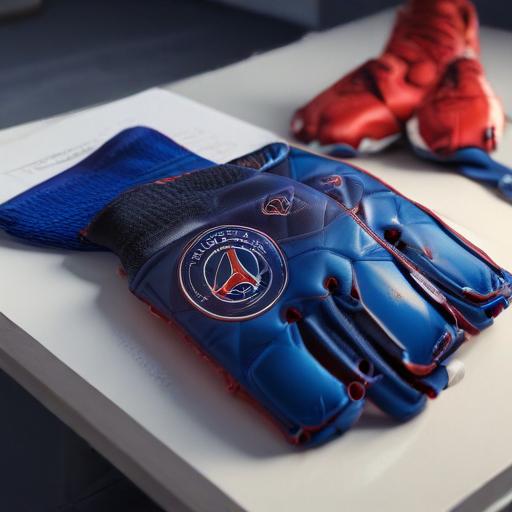Paris Saint-Germain are edging toward a significant personnel shift in goal, with Gianluigi Donnarumma potentially leaving the club as a new era under Luis Enrique begins to take shape. Reports suggest PSG are ready to part ways with the 26-year-old stopper, who spoke publicly of his disappointment at the unfolding situation after the club signaled a broader change in direction.
PSG have chosen to move on this summer, bringing in Lucas Chevalier from Lille as the man they believe fits their evolving blueprint better than Donnarumma does in this phase. The club made an offer to renew Donnarumma on improved terms, which was rejected. Donnarumma’s camp countered with a public view that, despite wanting to stay, he has been made to feel he no longer belongs in the group’s plans.
Luis Enrique has publicly backed Donnarumma while explaining the decision to pivot. He praised the Italian as one of the best and a fine person, but argued that PSG needed a different profile to match the coach’s possession-based vision. The aim is to dominate games through higher levels of build-up, a style PSG have already begun to implement. In Ligue 1 last season, they led the league in possession, but the player profile in goal matters for how far they can push the strategy.
Donnarumma arrived in Paris in 2021 as a youth World Cup and Euro winner with Milan, already recognized as one of the world’s premier shot-stoppers. His performances in Europe last season, including key saves in the Champions League semi-finals against Arsenal, underscored why he has been such a sought-after goalkeeper. Yet PSG believe Chevalier’s skill set is better suited to the direction they want to take the team.
The difference is not about stopping shots; it’s about the path the team wants to take with the ball. Chevalier is seen as a goalkeeper who can actively participate in build-up play, stepping out from the back, changing angles under pressure, and delivering long, accurate distribution to stretch or bypass the press. At Lille, he was deployed as a true 11th outfield player at times, a style that allows him to help PSG keep the ball higher up the pitch. His strengths include a proactive approach to high balls, confident handling in traffic, and a willingness to play the ball through the lines to attackers or midfielders.
Donnarumma’s limitations in this area are clear to PSG: while he is exceptionally capable of safe passes and quick reflex saves, his instinct has not always been to press high or split lines with through passes. Environments that prize aggressive possession and a high defensive line require a goalkeeper who can act as the first passer and the catalyst for pressing triggers. Chevalier’s game model appears to fit that need much more closely.
Physically, the two keepers are different as well. Donnarumma, at 6ft 5in (196cm), has a towering presence and extraordinary reach, but he is not as aggressive off his line as Chevalier, who at 6ft 2in (188cm) is instinctively proactive in cutting off angles and coming off his line to deal with crosses and cutbacks. Chevalier’s long, flat distribution is also highlighted as a weapon for maintaining pressure higher up the pitch, an attribute PSG believe will help them sustain control over matches.
The decision is being viewed not as a verdict on Donnarumma’s talent but as a strategic adjustment to maximize PSG’s ceiling in the Enrique era. The club’s preference for a goalkeeper who can function as a true outfield player in possession reflects a broader shift in the way elite teams are defining the role of the last line of defense.
In terms of market interest, there have been persistent questions about where Donnarumma could land next. While reports have linked him with several options, there has also been clear messaging that Manchester United are not pursuing him, at least for now. The right project and financial terms could still attract interest from clubs that prize defensive solidity tied to high-level build-up play. Donnarumma remains a Champions League winner and a European champion, with years ahead of him to contribute at the highest level, provided he finds a system that leverages his strengths while minimizing perceived limitations.
PSG’s decision to sign Chevalier signals a broader, longer-term plan: build a spine that can sustain and elevate their possession-driven approach across all competitions. Chevalier’s youth (23) gives him room to mature alongside the club’s evolving style, offering a long-term solution that can grow with the team as they push to win every competition they enter.
For Donnarumma, the road ahead is still bright. A goalkeeper of his caliber can thrive in environments optimized for his strengths or in roles where a club’s identity focuses on a more conservative build-up. The current PSG move simply reflects the modern reality of elite football: the goalkeeper is increasingly a first line of attack as much as a last line of defense.
Overall, PSG’s transition aims to refine their possession game, push higher up the pitch, and maintain control through a goalkeeper who can act as a distributor and an integral part of the pressing system. It’s a bold shift that could position the club for greater on-field dominance in the coming seasons, even as it opens a new chapter for one of the game’s finest shot-stoppers. If the changes unlock more sustained control and sharper transitions, PSG’s gamble could pay off with continued success at the highest levels.
